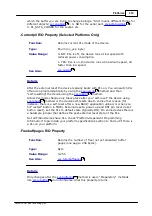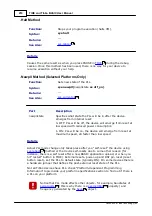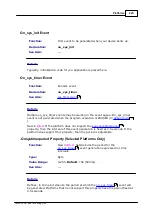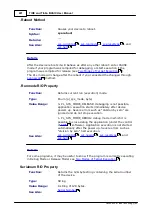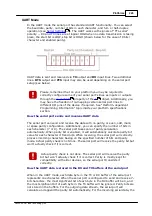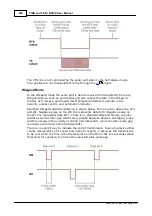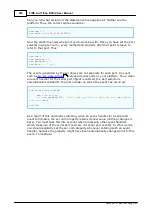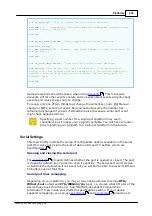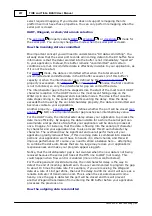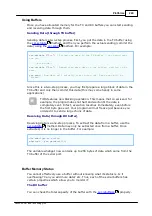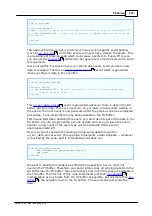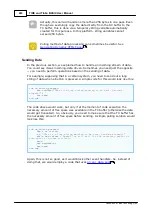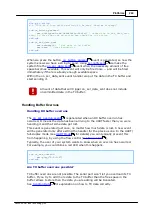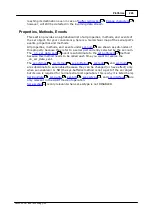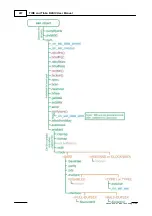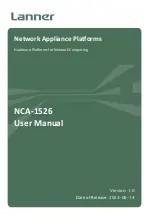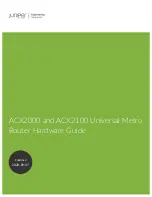
232
Platforms
©2000-2008 Tibbo Technology Inc.
Clock/Data Mode
In the clock/data mode the serial port is able to receive the data directly from any
clock/data or "magstripe interface" device, such as a card reader. The serial port is
also able to output the data in the clock/data format, as if it was the card reader
itself. Magstripe and clock/data interfaces are popular in the security, access
control, automation, and banking industry.
Standard clock/data transmission is shown below. There are two data lines- clock
and data. Each negative transition on the clock line marks the beginning of the
data bit. The data line carries actual data. When the state of the data line is LOW it
means data bit 1, and vise versa. There is no standard clock/data timing and some
devices, such as non-motorized magnetic card readers, output the data at variable
speeds (depending on how fast the user actually swipes the card).
The magstripe interface only differs from the clock/data interface in that it has a
third line- card present. This line goes LOW before the data transmission and goes
back to HIGH after the transmission is over. The serial port does not require the
card present line for data reception. Just like with
, it identifies the
end of incoming data by measuring the time since the last negative transition on
the clock line. For data transmission, your application can easily use any regular I/
O line to serve as card present line.
Compared to Wiegand interface, the data format of clock/data interface is very
standardized and its varieties include standard data formats for different "tracks"
of the magnetic card. Most clock/data devices you will actually encounter have
nothing to do with magnetic cards but terminology persists.
229

